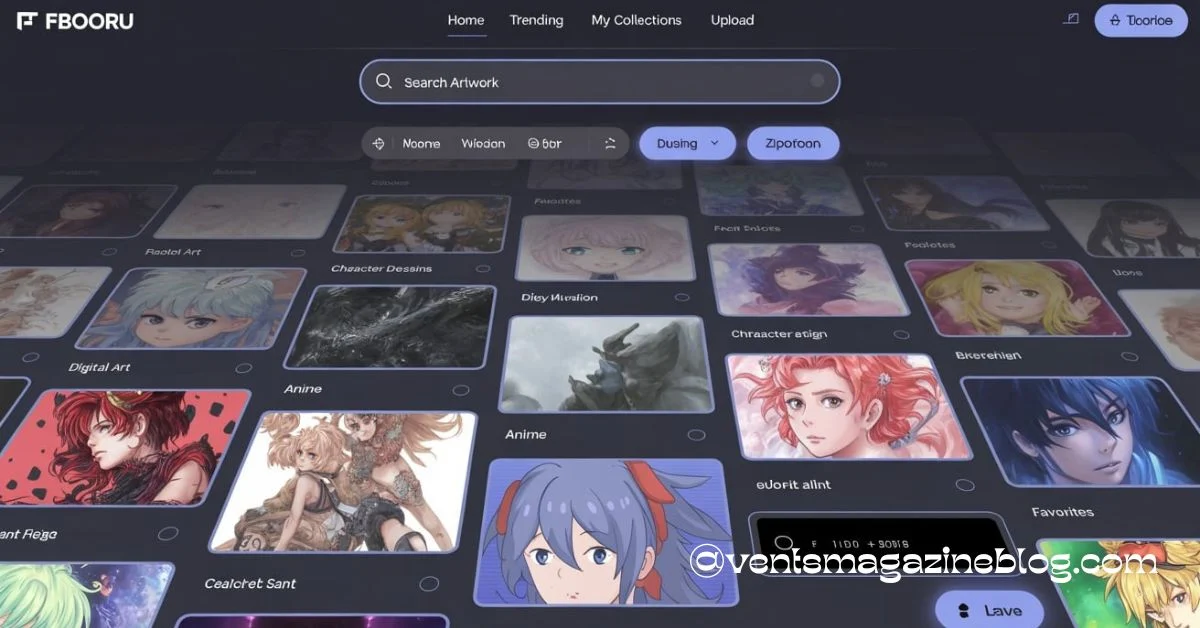Incestflox is a term describing the growing online interest in taboo incest-themed content. It spreads fast due to popular shows and fan communities sharing stories that mix shock and complex emotions. This trend reflects how digital media shapes what people explore and discuss today.
Stay tuned with us as we dive deeper into Incestflox, exploring its impact on society, media, and mental health in upcoming articles.
What Is Incestflox and Why Is It Gaining Attention Online?
Incestflox is a new term used to describe a growing interest in taboo content that involves incest themes online. The word comes from “incest” and “flox,” which suggests a group or trend. People use it to discuss how this type of content is spreading on the internet.
This idea is not brand new. Old books and myths also showed stories about family relationships that crossed social lines. Today, digital platforms make it easy to share these stories. Now, more people see them, talk about them, or even create their versions.
Shows like Game of Thrones helped popularize this trend. Viewers saw complex stories between siblings or relatives. Some were shocked, others were curious. This helped Incestflox grow fast, especially on fan sites, forums, and social media.
The reason Incestflox gets so much attention is because it mixes shock value with storytelling. Some people follow it to explore deep emotions. Others join the conversation out of curiosity or to question social rules.
As more people discover and share this type of content, the topic gains traction. That’s why Incestflox is not just a word—it’s a reflection of changing media habits and how people interact with complex subjects online.
How Does Media and Storytelling Influence the Rise of Incestflox?

Incestflox is rising fast because of how modern media and storytelling work today. Big shows, movies, and books often use taboo plots to shock or attract viewers. When people see characters in incest relationships, even if it’s not the main part of the story, it creates a strong reaction. This makes fans talk, share clips, write posts, and build online groups.
A clear example is Game of Thrones. It showed a brother and sister in a relationship. That story made many people curious. Some discussed the power struggle, while others simply followed the drama. This helped the idea of Incestflox grow as fans looked for more of the same kind of stories.
Writers also play a big part. Some use incest themes to explore pain, control, or family secrets. Others focus on fantasy or shock value. As a result, more Incestflox content appears in fan fiction, online videos, and forums. When storytelling repeats these ideas often, people notice, and the trend spreads.
What Are the Psychological and Ethical Issues Behind Incest-Themed Content?
Incestflox brings strong reactions because it deals with deep emotions and sensitive topics. Many people feel confused or uncomfortable when they see incest-themed content. That’s because it breaks social rules that most people follow from a young age.
From a psychological view, experts say people are naturally not attracted to close family. This is known as the Westermarck effect. It helps keep family bonds healthy. But when the media shows incest, it can blur the lines for some viewers. It may cause anxiety, guilt, or even shame, especially in young or sensitive minds.
On the ethical side, people worry that Incestflox may make harmful ideas look normal. If these stories are shown too often or too casually, they can send the wrong message. Some creators treat these topics with care. Others do not. That makes it hard for viewers to know what’s right or wrong.
When people support this content with likes, shares, or comments, it can feel like approval. This may push creators to make more, without thinking about the harm. That’s why it’s important to talk about Incestflox with honesty, care, and mental health in mind.
What Legal and Social Media Challenges Come With Incestflox Content?
Incestflox content creates many problems for both laws and social media platforms. Even if the content is fiction, it still touches on real-world taboos. Different countries have different rules. In some places, showing or sharing incest-related content, even in stories, may break the law. Other areas allow it if it is clearly made up.
For social media, the challenge is even more complex. Platforms want to let people share ideas, but they also have to protect users. Incestflox can be harmful, especially if it reaches kids or people who are not ready to see that kind of content. Most apps have rules, but those rules are not always clear or easy to enforce.
Some people use fake names or private groups to post Incestflox content. This makes it harder to report or block. Even when users do report it, tools don’t always work well. Victims or concerned users often feel ignored or helpless.
Because of all this, Incestflox forces companies to ask hard questions. How can they allow free speech but stop harm? How do they spot dangerous content without hurting honest creators? These are issues that still need better answers.
How Is Incestflox Affecting Personal Relationships and Society as a Whole?
Incestflox doesn’t just live online—it can also affect real-life relationships and family bonds. When someone starts watching or reading incest-themed content, it may cause confusion or tension in their personal life. Family members may feel worried, distant, or uncomfortable if they discover the truth. This can lead to stress, arguments, or a breakdown in trust.
For some, Incestflox may change how they view love, loyalty, or family roles. It can create emotional conflict, especially if the person feels drawn to something they know is wrong. These feelings can grow stronger in people who are already lonely, anxious, or curious about taboo ideas.
At the society level, the rise of Incestflox shows a shift in how people use media. It shows that more people are exploring hard or hidden topics. But if these topics are shown too often or without care, they may weaken basic social values, like respect for family boundaries.
This is why open talk and mental health support are important. People need safe spaces to ask questions, understand what they feel, and get help if needed. Incestflox should be seen not just as a trend, but as a sign that deeper conversations are needed in homes and communities.
How Can We Promote Awareness and Responsibility Around Taboo Media Trends?

To deal with rising trends like Incestflox, we need more awareness, education, and responsibility. These stories may attract attention, but without clear guidance, they can confuse or harm people, especially young or vulnerable viewers.
First, schools, parents, and mental health groups should talk openly about taboo content. If someone is drawn to incest, they need support, not shame. Honest talks help people understand the difference between fiction and real-life values.
Creators also have a role. Writers, artists, and video makers must think about what they share. If they choose to explore tough subjects, they should handle them with care. Adding context, warnings, or messages about mental health can help keep content from causing harm.
Social media platforms must also do better. They need stronger rules and better tools to report or block harmful posts. At the same time, users should be encouraged to think before they like, share, or comment.
In the end, Incestflox shows us that content trends can be powerful. We all must work together to guide these trends in a way that keeps people safe, informed, and emotionally healthy.
FAQ’s
1. Is Incestflox linked to real-life behavior or just fantasy content?
Incestflox mostly appears in fictional stories, fan-made videos, or digital art. While it’s based on taboo themes, it does not always reflect real-life actions. However, repeated exposure can affect how some people think about these boundaries, especially if they don’t understand the line between fantasy and reality.
2. Why are some online communities drawn to Incestflox content?
Many people are drawn to Incestflox out of curiosity, emotional conflict, or interest in extreme storytelling. Some users may use it to explore dark topics in a space where they won’t be judged. Others may find comfort in shared experiences or trauma-related themes that these stories sometimes touch on.
3. How can parents protect their children from Incestflox-related content online?
Parents can protect children by using content filters, monitoring media usage, and having open talks about online safety. Explaining why certain topics, like Incestflox, are harmful or confusing helps young people make smarter choices and avoid risky content.
4. Can engaging with Incestflox impact someone’s mental health?
Yes, especially for individuals who are emotionally vulnerable. Incestflox content can trigger feelings like guilt, confusion, or distress. In some cases, it may even bring up past trauma. That’s why mental health support and digital literacy are so important when dealing with such topics.
5. Are streaming platforms responsible for allowing Incestflox content?
Streaming and social platforms play a major role. They must balance free speech with user safety. If Incestflox content crosses ethical or legal lines, platforms should act by enforcing guidelines, issuing content warnings, or removing harmful material when needed.
Conclusion
Incestflox is more than just a trend—it reflects how digital media is changing what people see, share, and talk about. Even though it deals with a taboo topic, it has found space online through stories, shows, and fan groups. This makes it important to look at Incestflox with care and understanding.
As this content becomes more visible, we need to think about how it affects people, mentally, emotionally, and socially. Open conversations, better media rules, and strong support systems can help. Instead of ignoring or judging the topic, we must guide it with knowledge and responsibility.
By staying aware and thoughtful, we can protect viewers while keeping the freedom to create. Talking about Incestflox in the right way can lead to better media choices and a safer online world for everyone.













Leave a Reply